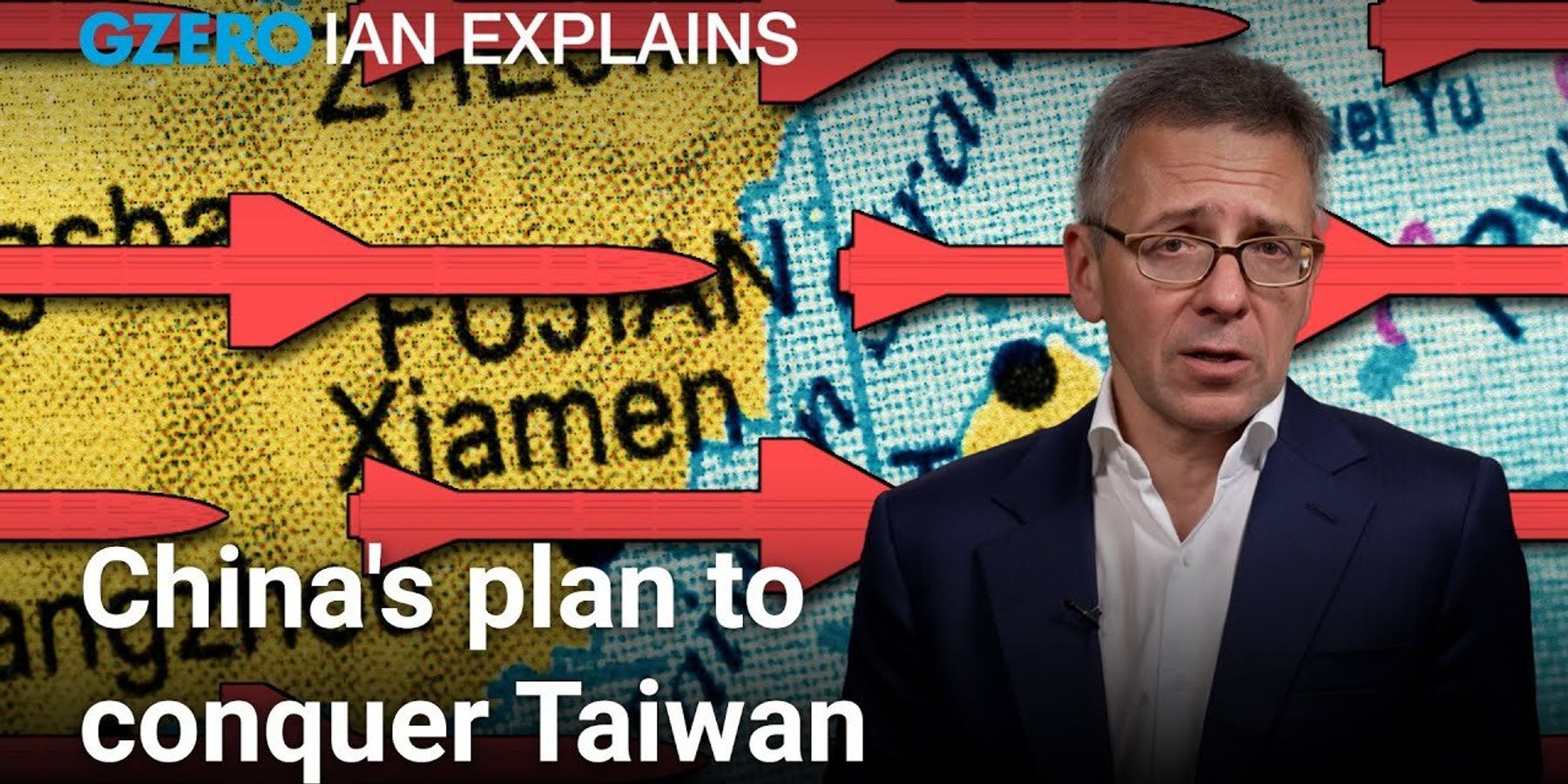Trending Now
We have updated our Privacy Policy and Terms of Use for Eurasia Group and its affiliates, including GZERO Media, to clarify the types of data we collect, how we collect it, how we use data and with whom we share data. By using our website you consent to our Terms and Conditions and Privacy Policy, including the transfer of your personal data to the United States from your country of residence, and our use of cookies described in our Cookie Policy.
{{ subpage.title }}
How China would seize Taiwan without firing a shot
Chinese President Xi Jinping has made reunification with Taiwan a key pillar of his nationalist agenda. He’s ordered the People’s Liberation Army to be ready to seize Taiwan by 2027, and the PLA has been conducting near-daily military drills around the island–larger, louder, and more aggressive than ever before. On Ian Explains, Ian Bremmer breaks down how China could seize Taiwan without firing a single shot.
The rising tensions in the Taiwan Strait have policymakers and military analysts nervous China is preparing for an invasion. But is armed conflict with Taiwan in Beijing’s best interest? It would be deadly, costly, and likely to drag into the US and its allies. But short of an all-out invasion, China has plenty of options to force unification with Taiwan. It’s known as “gray zone” warfare—action that stays just below a threshold that would trigger an international response, which is ideal for Beijing: no missiles, no tanks, just a slow, suffocating squeeze.
GZERO World with Ian Bremmer, the award-winning weekly global affairs series, airs nationwide on US public television stations (check local listings).
New digital episodes of GZERO World are released every Monday on YouTube. Don't miss an episode: subscribe to GZERO's YouTube channel and turn on notifications (🔔).GZERO World with Ian Bremmer airs on US public television weekly - check local listings.
Arauca, Colombia.- The photo shows the site of an attack with explosive devices at a military base located in Puerto Jordán in the department of Arauca, Colombia on September 17, 2024. The president of Colombia, Gustavo Petro, said that "a peace process" that his Government until now maintained with the guerrilla of the National Liberation Army (ELN) is closed, after the attack that left two soldiers dead and 26 wounded in Arauca.
Colombia to declare emergency over rebel violence
Colombian President Gustavo Petro said Monday he will declare a state of emergency after guerilla attacks by the ELN in the northeast of the country killed at least 80 people and forced over 11,000 to flee. The attacks came after Petro suspended negotiations with the rebels on Friday and could prove a fatal blow to his dovish “Total Peace” policy, which aims to end armed violence in Colombia through dialogue.
Background: Colombia’s internal conflict dates back decades but reached an inflection point in 1964, when two left-wing guerilla groups, the ELN and FARC, rebelled against the government. Throughout the 1960s, neither the government nor the guerrilla groups could gain an upper hand, but instability allowed drug cartels exporting to the US to become obscenely wealthy — and well-armed — worsening the violence.
Left-wing groups splintered repeatedly, while wealthy landowners organized self-defense forces that sometimes morphed into far-right death squads. US attempts to aid its key South American ally added more guns and money to the volatile mix, which has killed at least 450,000 people.
The hard line. Petro’s emergency declaration is a callback to the days of his predecessor and political rival Álvaro Uribe, who used emergencies to raise war taxes to fight the insurrectionists and cartels. Petro — a former guerilla — heavily criticized Uribe’s tactics, but the national reconciliation process he put forward instead looks like it’s falling apart. Where the conservatives managed to sign a peace agreement with the FARC in 2016 that has largely held up, the 2023 ceasefire Petro signed with the ELN is in tatters — and he is sending troops back in.
